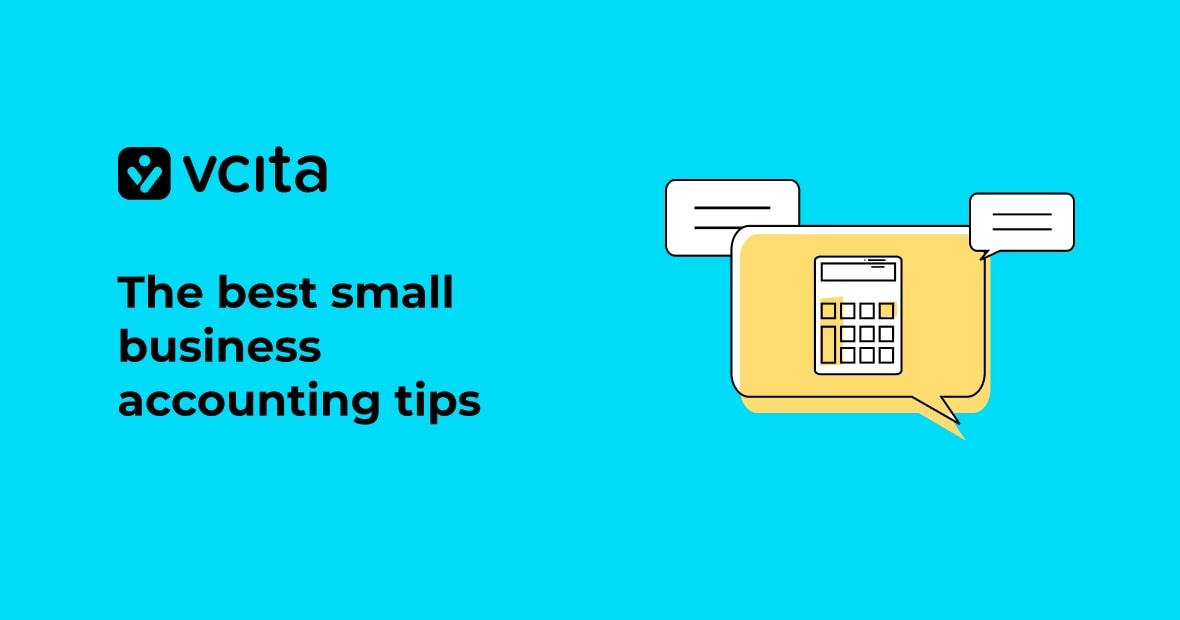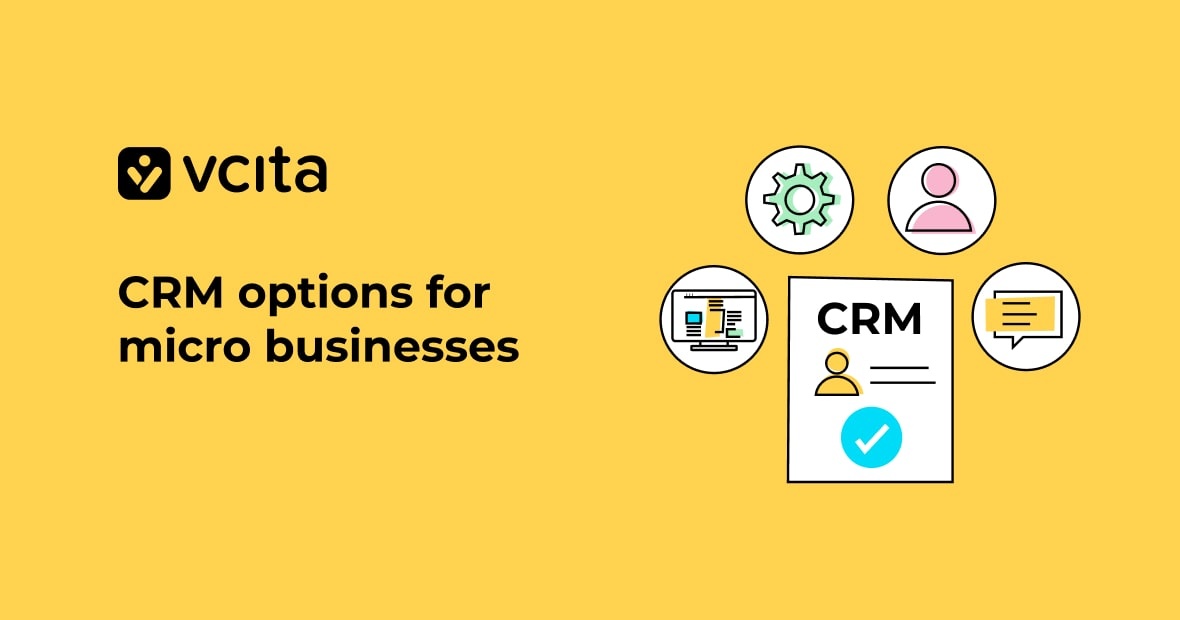Accounting and bookkeeping can feel overwhelming when you’re focused on growing your business. But you know how important it is to get a handle on your cash flow. Thankfully, you can use bookkeeping software to track income and expenses carefully, getting the solid financial records you need to control your cash flow.
In this article, we’ll share small business accounting tips like keeping your financial records, tracking revenue and expenses, and choosing the right accounting method. With these small business accounting tips for managing your cash flow, you’ll gain the confidence that comes from understanding your business’s income and expenses.

Set your business up for easy accounting
When you start your small business, it’s important to set up efficient processes that makes it easy for you to track cash flow. Maintaining good financial management and accounting practices from the start will set your small business up for success. While it may not be the most exciting part of running a company, it’s essential for controlling your cash flow and helping your business thrive.
Separate your personal and business finances
As a small business owner, one of the first things you need to do is open a separate business bank account. Mixing your personal and business finances is a recipe for disaster. Get a business credit card and use it only for business expenses.
Track income and expenses
Use accounting software to track your revenue and expenses. Connect your business bank account so your transactions are automatically recorded. This will make tax time much easier and help you see how your business is doing financially.
Do your own bookkeeping
While it can be tempting to hire an accountant to handle your books, doing your own bookkeeping as a small business owner is important. Review your bank statements and invoices regularly to catch any errors. Learn how to read basic financial reports like an income statement and cash flow statement. These skills will serve you well as your business grows.
Choose an accounting method
You’ll need to choose either the cash or accrual accounting method. Cash is simpler but accrual provides a more accurate picture of your business. Talk to an accountant to determine which is best for your needs.
Track expenses using bookkeeping software
As a small business owner, keeping accurate financial records is key to controlling your cash flow and growing your business. One of the best ways to do this is by using bookkeeping software to track your income and expenses.
Choose a user-friendly solution
Look for an easy-to-use software like QuickBooks or vcita that can handle tasks like invoicing, bill paying, and financial reporting. These programs connect to your business bank accounts and credit cards to automatically import your transactions. They also make it simple to categorize expenses and reconcile your bank statements each month.
Review reports regularly
Most bookkeeping software can generate reports like income statements, balance sheets, cash flow statements, and expense reports. Review these regularly to see how much revenue is coming in, how much you’re spending, accounts that are overdue, and any unusual activity. Look for trends that could impact your cash flow and make adjustments as needed.
Get help when you need it
Don’t get overwhelmed if numbers aren’t your thing. Consider hiring an accountant or bookkeeper, at least part-time, to set up your system and provide guidance. They can also review your records periodically to catch any errors or suggest improvements to better manage your small business accounting.
Choose the right accounting method for your small business
As a small business owner, one of the most important decisions you’ll make is choosing an accounting method. The two most common options are cash basis and accrual basis.
Cash Basis
With the cash basis method, you record income and expenses when cash actually changes hands. This is a simple way to keep your books that works well for small businesses. However, it doesn’t always show the most accurate picture of your financial health. For example, if you buy supplies but don’t pay for them until the following month, those expenses won’t show up on your cash flow statement until you make the payment.
Accrual Basis
The accrual basis method recognizes income when it’s earned and expenses when they’re incurred. So if you buy supplies but don’t pay for them right away, the expense is recorded when you receive the supplies. Accrual accounting provides a more accurate financial picture, and is required if you have over $25 million in annual revenue. However, it is more complex and often requires accounting software to implement.
As your business grows, you may want to consider switching from cash to accrual basis. But when you’re first opening a business bank account and getting started, the simplicity of cash basis accounting is appealing. Many small business owners use a combination of the two methods, with cash basis for day-to-day tracking and accrual at the end of the year to calculate revenue and expense.
Open a business bank account and credit card
As a small business owner, keeping your business and personal finances separate is crucial. One of the first steps is opening a dedicated business bank account. This allows you to track revenue and expenses for your business independently.
Register for a business bank account
When opening an account, you’ll need documents like your business license or permits and a tax ID number. For most small business owners, your social security number will work to open the account.
Acquire business credit cards
Business credit cards are useful for small purchases and expenses, and for building business credit. Apply for a card in your business name, using your tax ID number. Make sure to use business cards only for business expenses, and pay the full balance each month to avoid interest charges.
Review bank statements weekly
It’s important to check your business bank statements weekly for any unauthorized charges or fees. You can also ensure all customer payments, expense transactions and payroll are accurate. Tracking expenses against a budget helps identify areas where you’re overspending.
Create financial statements to understand your cash flow
The best way to monitor your income and expenses is by creating financial statements on a regular basis. Your bookkeeping software can generate key financial statements that provide an overview of your financial health.
Here are some of the most important financial documents you should generate each month:
- A cash flow statement. This shows the flow of cash in and out of your business each month.
- A balance sheet. This provides a snapshot of your assets, liabilities, and equity at a given point in time.
- An income statement. This details your revenue, expenses, and net profit for a set period.
Review statements regularly to detect any issues early on.
Small business accounting and bookkeeping doesn’t have to scare you
Small business accounting and bookkeeping may seem intimidating, but it doesn’t have to be. Keeping good financial records, separating your business and personal accounts, and monitoring your income, expenses, and cash flow regularly will help you gain control of your cash flow. With solid accounting practices in place, you’ll gain the insight you need to keep growing your business.




























